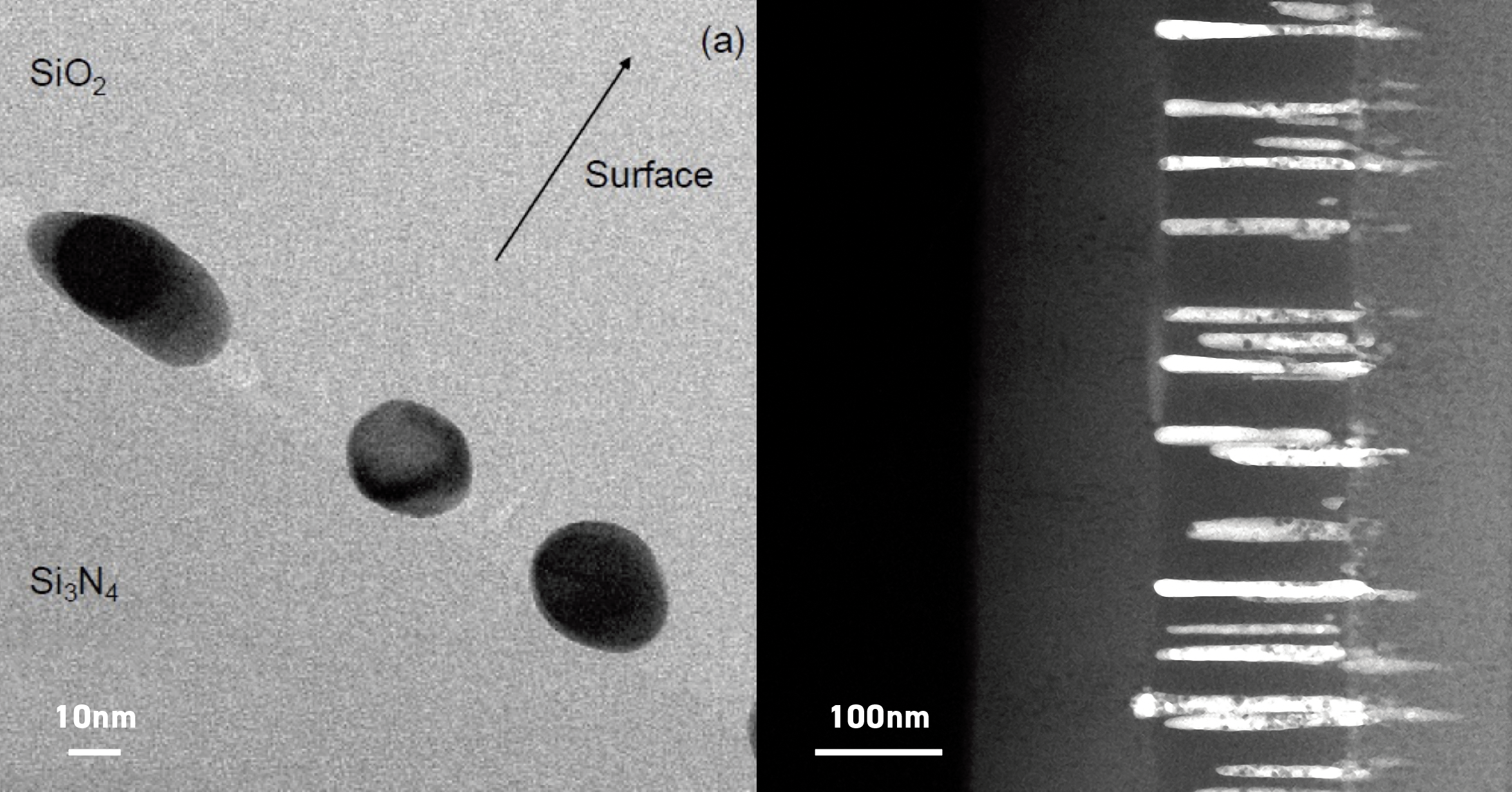One way to increase their efficiency is to concentrate light coming into the cell. This can be achieved by adding a thin transparent layer filled with small metal particles that help direct light that would otherwise be reflected or scattered, into the solar cell.
Optimised cell performance will depend on the size, shape and density of metallic particles in the added layer. Pablo Mota-Santiago and A/Prof. Patrick Kluth from the Australian National University (ANU) are collaborating with researchers in France and have focused on ways to control the size of elongated gold particles deposited on a silicon wafer.
The researchers first lay down a continuous layer of gold on the silicon, surrounded above and below by two barrier layers to restrict the particle elongation process. The system was heated to make the gold form into spheres and then irradiated with various doses of high energy gold ions in order to cause controlled elongation of the round particles.

TEM images of the spheres (left) and elongated gold particles (right)
At the Microscopy Australia facility at ANU, the researchers used transmission electron microscopy (TEM) to examine the features produced in their process. High dose irradiation led to a dense array of elongated gold particles forming in the middle layer. Further studies to evaluate the effectiveness of the different particles in concentrating light can now take place.
July 24, 2018